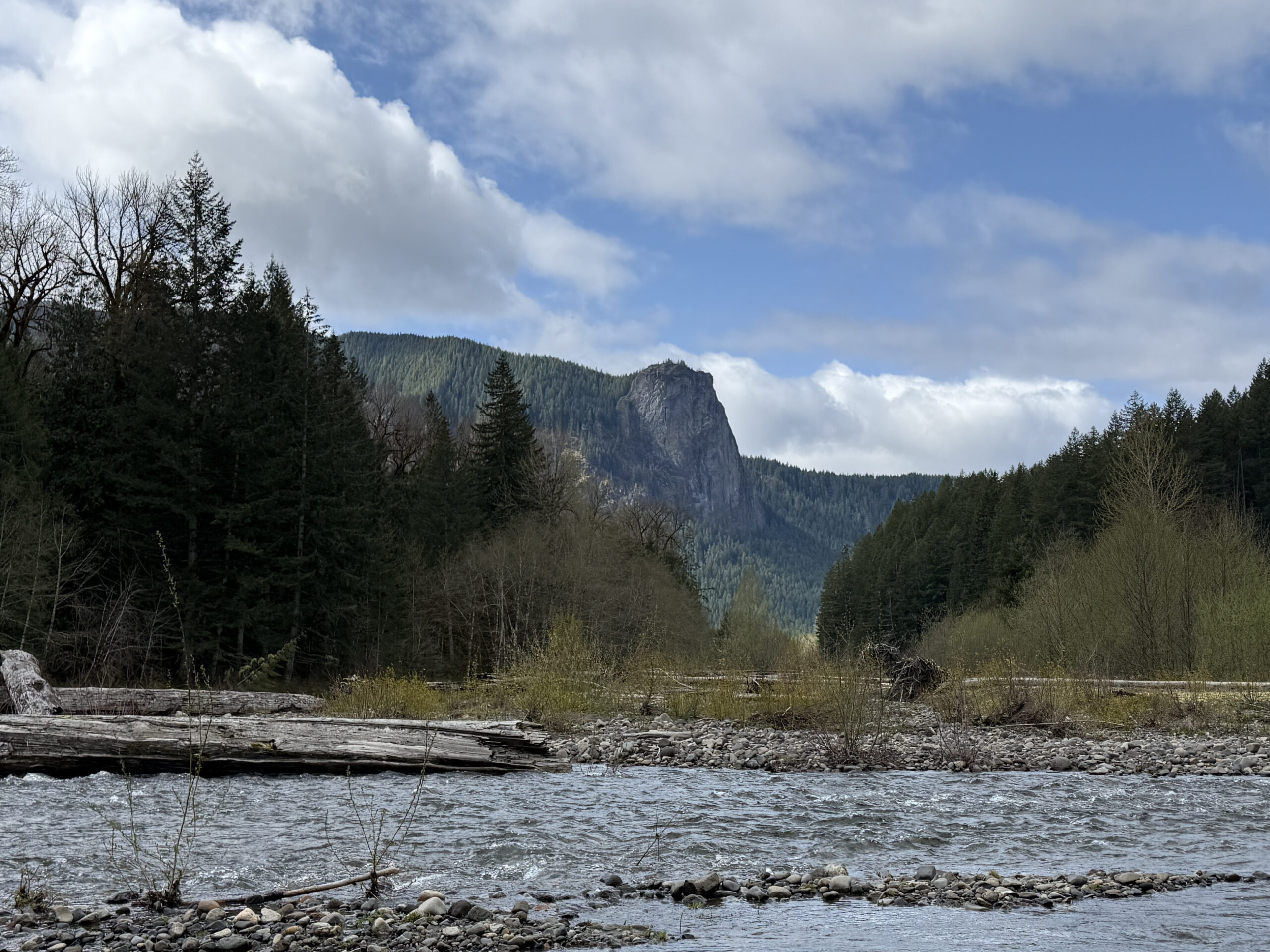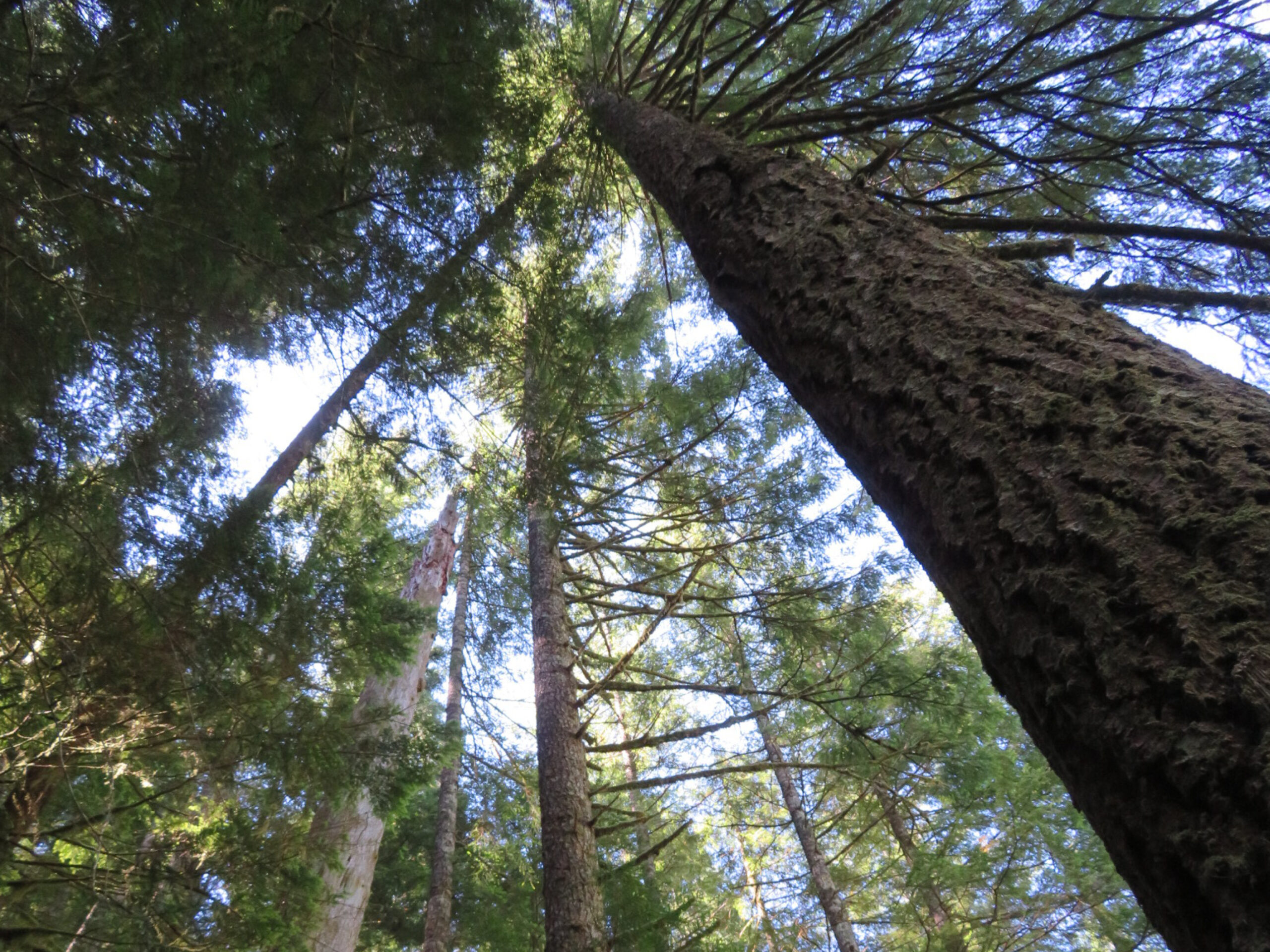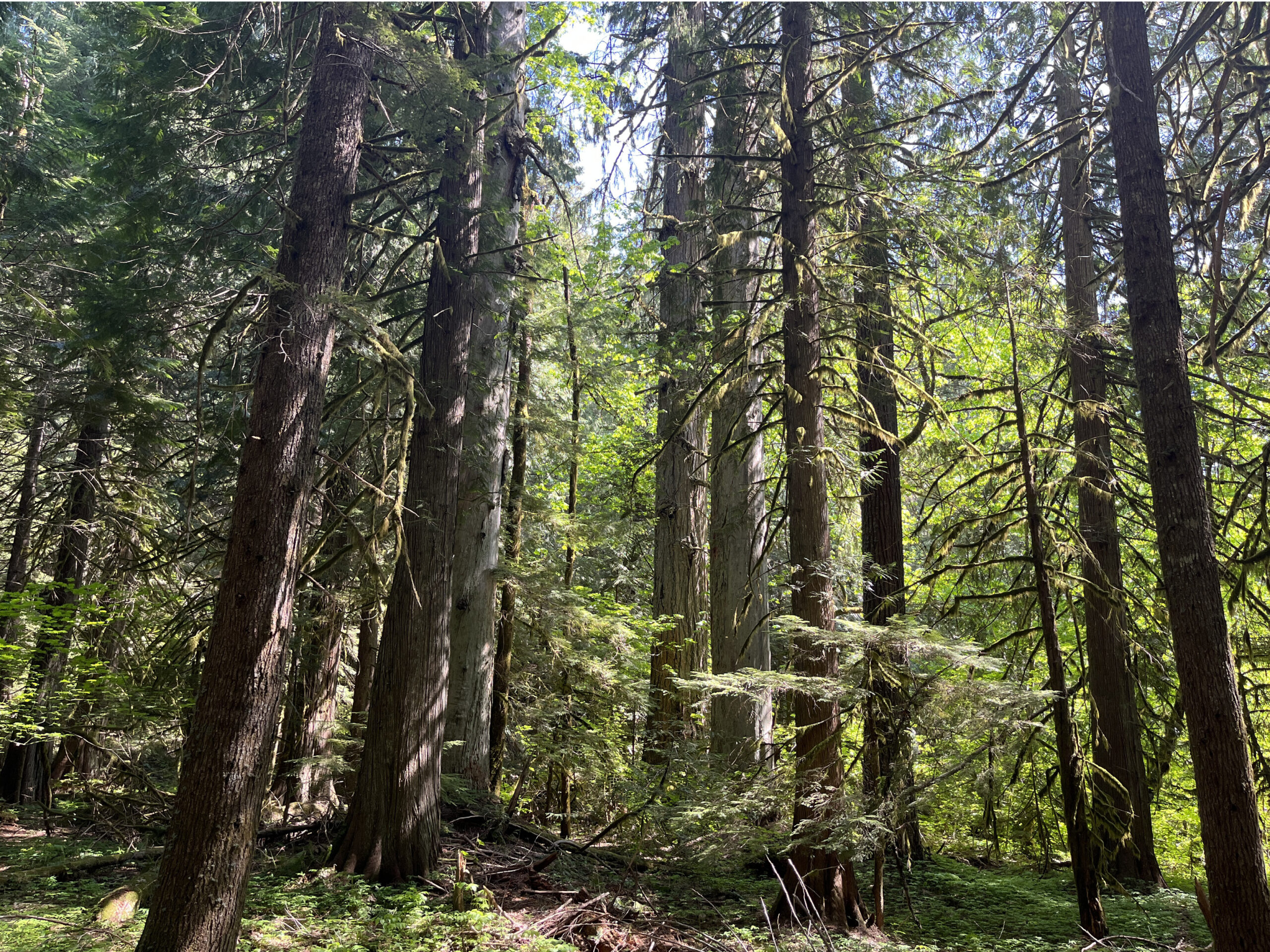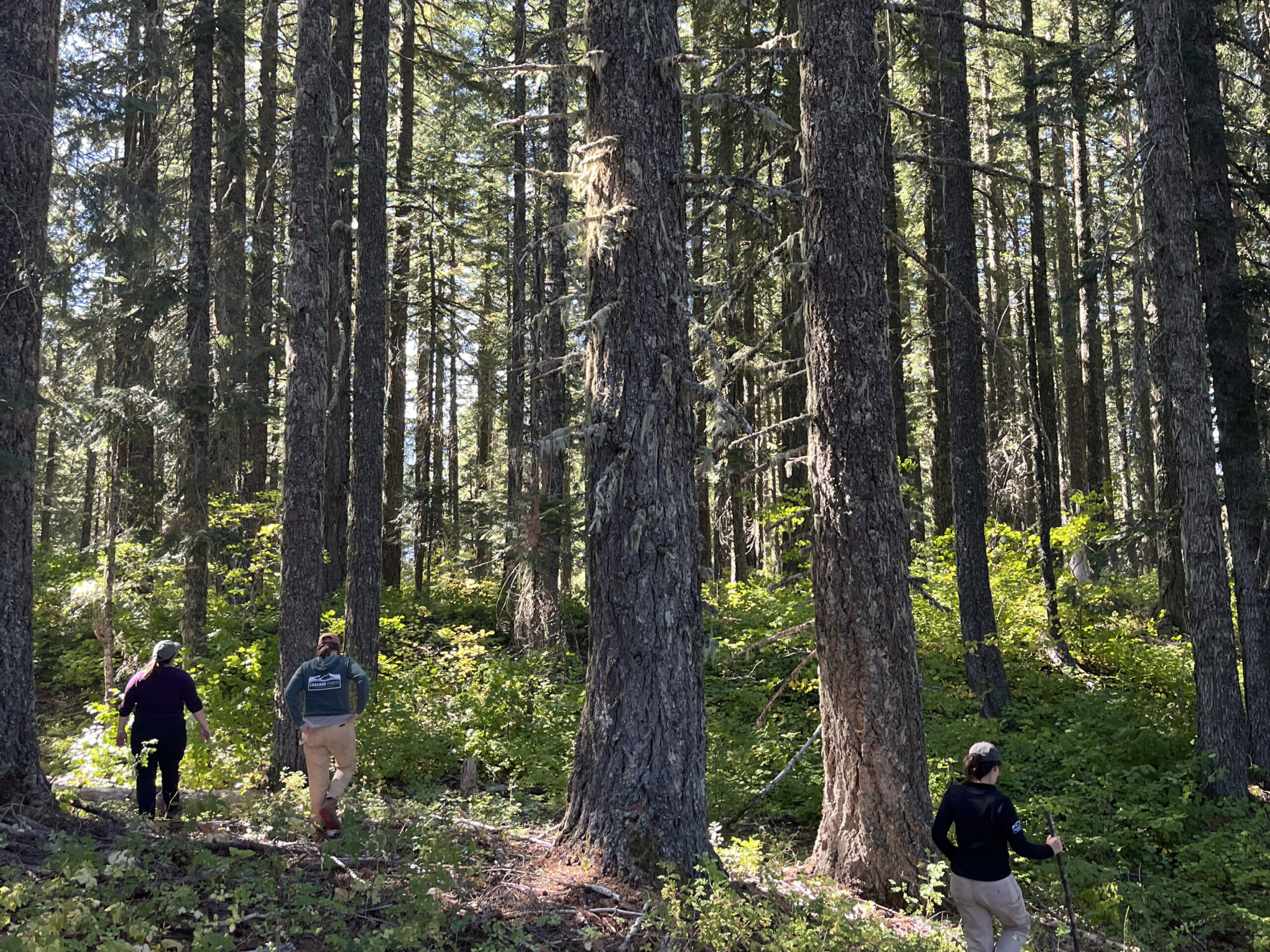August 30, 2020
We have some important updates about our work to protect Goat Mountain and the Green River Valley from hard rock mining. A September 18 hearing date has been set in our case against the Forest Service and Bureau of Land Management (BLM). Oral argument will be held remotely rather than in a courtroom. It is currently unknown who will be able to watch the arguments, but we will update you as we learn more.
Why did we sue?
In the final weeks of 2018, the Forest Service and the BLM granted a Canadian company, Ascot Resources, permits to drill 63 exploratory boreholes 2 to 3 inches in diameter on and around Goat Mountain, despite the comments and objections of Cascade Forest Conservancy and opposition from tens of thousands of concerned individuals and other organizations. In response to the decision, we filed a lawsuit because we believe the permits issued are illegal. A portion of the area in question was purchased with funds from the Land and Water Conservation Fund (LWCF), which is specifically allocated for purchasing land for the purposes of recreation and conservation. Furthermore, the exploratory drilling permits were granted without the necessary analysis required by the National Environmental Policy Act (NEPA) leading to a Finding of No Significant Impact–or a determination (which we believe to be false) that the project will not have any significant impact, negative or positive, on the environment.
Why is an exploratory drilling permit such a big concern?
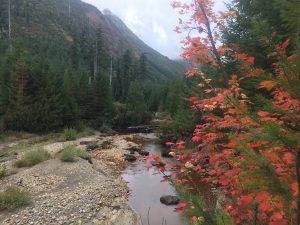 Drilling exploratory boreholes will cause significant negative impacts on the area and the people who enjoy it. The Ascot proposal involves reactivating old roads in pristine forest to transport trucks and heavy equipment to drill sites. Harmful chemicals would be used at the drill sites, some of which are located within 100 feet of waterways, and the constant noise of equipment would disturb wildlife and ruin some of the best fishing, hunting, hiking, horseback riding, and outdoor recreation opportunities in Washington State.
Drilling exploratory boreholes will cause significant negative impacts on the area and the people who enjoy it. The Ascot proposal involves reactivating old roads in pristine forest to transport trucks and heavy equipment to drill sites. Harmful chemicals would be used at the drill sites, some of which are located within 100 feet of waterways, and the constant noise of equipment would disturb wildlife and ruin some of the best fishing, hunting, hiking, horseback riding, and outdoor recreation opportunities in Washington State.
Our biggest concern, however, is that if significant mineral deposits are found, stopping an open-pit hard rock mine may become very difficult. Our best chance of protecting this place and the surrounding areas is to stop the mining process now, not later.
What is at stake?
Goat Mountain and the Green River Valley are situated just beyond the borders of the protected Mount St Helens National Volcanic Monument. In fact, as you can see in the map below, the boundary lines of the monument were drawn specifically to exclude the area from protection because of the possible value of the mineral deposits that may lie there. The monument was formed in 1982. During the years of the Regan administration, excluding these areas from protection was a necessary compromise to achieve protections for the rest of the mountain, but one that left the region vulnerable to mining threats.
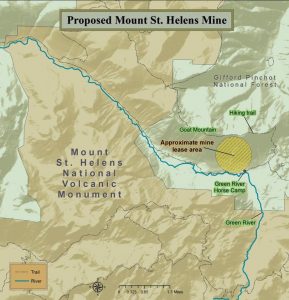
The slopes of Goat Mountain are home to some of the only old-growth forest stands in the area to survive both the intensive logging of the preceding decades and the 1980 eruption. The Green River flowing directly below is a recognized gene bank for wild steelhead, and an eligible Wild and Scenic River. A mine would completely decimate this landscape. We are also concerned by the toxic chemicals that are used in hard rock mining and stored in tailing ponds. These toxic ponds would pollute waterways and poison drinking water far beyond the immediate area if (or more accurately when) the pond leaks and breaches into the Green River, which flows into the Toutle, then into the Cowlitz. There is no way to mine safely on the slopes of an active volcano and in a seismically volatile landscape. If a mine is excavated the impacts of the damage will be felt for hundreds of years.
What are our next steps?
Even if we win in court, this fight will not be over. Similar permits have been approved and ruled illegal in the past. The only way we can protect this area from mining, in the long run, is to secure permanent protections for the Green River Valley.
Cascade Forest Conservancy will make sure to keep you up to date on this issue. You can help us by making a donation to support our work to protect this landscape here.



